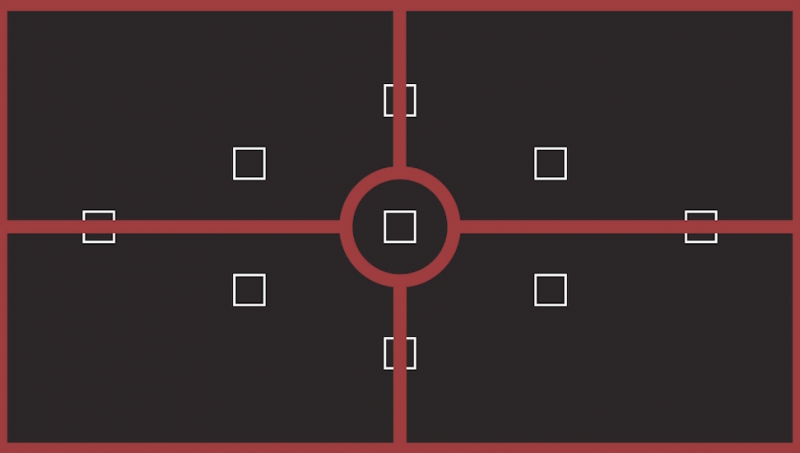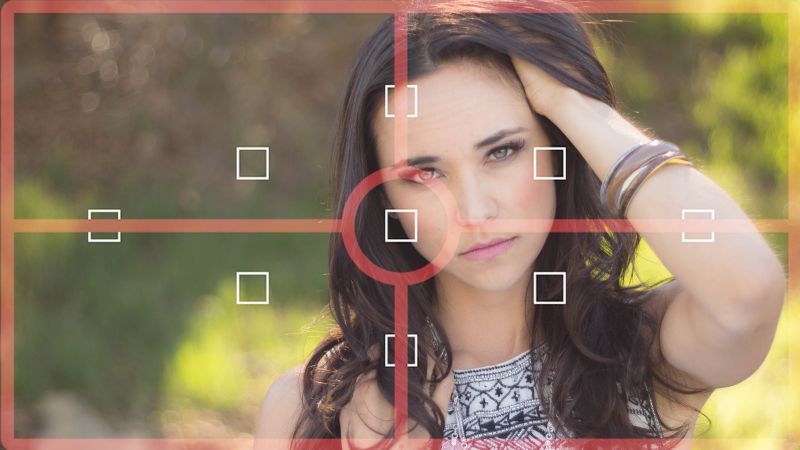Evaluative, matrix, spot, center-weighted average, and partial metering modes can be overwhelming and confusing for many photographers. However, familiarizing yourself with your camera’s metering mode system is an essential step in your photography education. Understanding the various metering modes allows you to achieve accurate exposures, maintain consistency in your shots, and improve your overall shooting efficiency. we will provide a concise explanation of each in-camera metering mode and present practical real-life examples to demonstrate how they function in different shooting situations. By the end of this tutorial, you will have a better grasp of metering modes and be able to use them effectively in your photography.
Metering Mode 1: Averaging
Averaging metering mode considers the entire scene and calculates the exposure accordingly. It is useful when capturing landscapes or scenes where you want to expose for the overall composition rather than a specific subject.

Metering Mode 2: Partial Metering (Spot Metering)
Partial metering, also known as spot metering, measures light from a small sample area in the scene, typically around 3-5% of the frame. Spot metering is often centered around the autofocus point, but some cameras allow you to select the metering point manually. When shooting in manual mode, spot metering is recommended as it provides a precise light reading for your subject.

Metering Mode 3: Multi-zone Metering (Evaluative or Matrix Metering)
Multi-zone metering, also called evaluative or matrix metering, divides the scene into zones and uses a proprietary algorithm determined by the camera manufacturer to determine the exposure. The specific calculations used by different cameras may vary, resulting in variations in exposure accuracy. In ideal lighting conditions, multi-zone metering usually produces correct exposures, but in challenging lighting situations or artistic compositions, the camera may not capture the desired photo as envisioned.

The Metering Mode I Use Most: Spot Metering
The metering mode I rely on the most is Spot Metering. Its ability to sample from a small area allows me to quickly achieve the precise exposure I desire. In fact, with spot metering, I often capture the perfect exposure in just one shot!
Note: Spot Metering should not be used in automated camera modes like Aperture Priority. In Manual Mode, the chosen metering mode does not alter the camera’s overall settings or exposure values. However, in automated modes, such as Aperture Priority, the metering mode affects the exposure value. For instance, if Spot Metering is used and it only considers 3% of the center focal area, the median exposure will be adjusted based on that 3%. If that area is over something very bright, the resulting median exposure will be darker to compensate. Conversely, if the spot falls on something dark, the median exposure will be brighter. This can lead to inaccurate exposures and subpar HDR image results because the camera bases its adjustments solely on that small area rather than the entire scene.
Metering Mode for HDR Photography: Evaluative/Matrix or Spot Metering
When capturing HDR (High Dynamic Range) images, you have two primary metering modes to consider: Evaluative/Matrix (Scene-Based) Metering and Spot Metering. The choice between these modes depends on your personal preference and workflow.
For HDR photography in Aperture Priority mode, the Evaluative/Scene-Based Metering Mode is a reliable choice. This mode allows your camera to analyze the entire scene and find a balanced exposure that captures the details and dynamic range of the scene. It simplifies the process of capturing multiple exposures for HDR images. Additionally, the Evaluative/Scene-Based Metering Mode can also be used effectively in Manual Mode for HDR photography.
On the other hand, Spot Metering can be an alternative option for capturing HDR images. With Spot Metering, you can focus on specific areas of the scene and ensure precise exposure for those areas. This mode is especially useful when you want to prioritize a particular subject or element within the frame for accurate exposure in your HDR images.
Ultimately, the choice between Evaluative/Matrix Metering and Spot Metering for HDR photography depends on your shooting style, the complexity of the scene, and your desired level of control over exposure. Experiment with both modes to find the one that best suits your needs and produces the desired HDR results.








